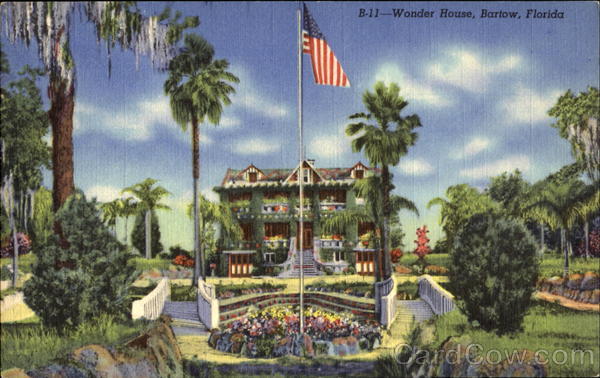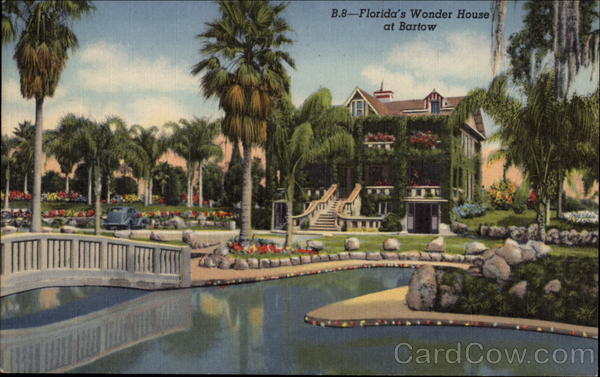The Wonder of Color: Making it Work in Your Home
Color! It is often the first design element that a homeowner considers in the decorating scheme, and it is also the easiest and most cost effective way to make a dramatic change in any interior. It af...
Color! It is often the first design element that a homeowner considers in the decorating scheme, and it is also the easiest and most cost effective way to make a dramatic change in any interior. It affects our moods, our look, our health, and even our success. We use colors to describe emotions and our state of mind ("feeling blue," "seeing red," "looking a bit green"). So read on to find out more about how to make the most of your favorite hues and get the scoop on their real meaning.All colors can run hot or cold depending on whether they have a yellow or blue base. Many of our associations with color are historically and culturally based. Not sure what you really like? Check out your closet. Chances are you tend to wear colors you enjoy, and they are also good options for your interior, possibly in different hues.
The guidelines for selecting colors include using test boards or wall areas of at least two feet by three feet in two coats, dry. (Youll need more if it is a dark color.
) Not even the pros select from those one inch chips in paint decks! Check the color morning, noon, and night with lamp light and daylight for a true effect.
Selecting the right finish is as important as the best color. Lighter colors are best in an eggshell finish, allowing easy maintenance but limited touching up. Darker, richer colors need a satin or semi-gloss finish to really bring out the depth and avoid chalking. Ceilings can be in a flat finish, but they do need to be tinted. White is out. A white ceiling wont show off your architectural trim if the trim is white also. Consider a warm neutral ceiling color like bone or in childrens rooms and sunrooms a robins egg blue.
Color is dramatically affected by light, and in fact the same color can look completely different on each wall in a room depending on the light and shadow at play. Most can learn their geographic room orientation without a compass. Just pay attention the where the sun rises and sets in relation to each room. Northern and Eastern light is much harsher, brighter and bluer, exaggerating blues, greens, and purple tones and balancing warmer shades, while Southern and Western light is richer, yellowier, and mellower and will literally make a room feel several degrees warmer without any true change in the thermostat. Homes are often oriented to have a kitchen facing east, to catch the morning light, while a dining room may have a Western Exposure that would feel hot in the afternoon but at night, when used most often, is quite comfortable.
This is just the tip of the palette with millions of combinations possible. When looking for a starting point, try working with a rug, starting at the bottom of the room, or a piece of favorite artwork, starting at the top. This will effectively provide parameters to establish a scheme, certainly changeable later. Most of all have fun with color!Ever wonder why so many dining rooms are burgundy? Burgundy is a derivative of red which has been proven to stimulate your appetite and raise your heart rate. For the same reasons and more, many restaurants, especially Chinese, Italian, Mexican and fast food chains, know it can make you spend more money and lose track of time, all while eating more. On a diet? Dont paint your kitchen red. Looking for a goods nights sleep? Keep red out of the bedroom; it doesnt promote rest.
Instead consider the purple family, from lavender to aubergine. Purple is known to slow the heart rate and encourage dreaming, certainly an advantage in a bedroom. On the other hand, it is also a teenage favorite for promoting daydreaming and creativity. If the kids arent studying enough or are sleeping excessively and have a lot of purple in sight, maybe a change is in order.
Blue and green are the most universally accepted colors, because they are found in nature. Blue is one of the most challenging colors to select for an interior, but it can be used to great effect on ceilings, for a sky appearance, or even in indigo for a night time feeling. It promotes calmness and trust. Remember the expression "true blue"?Green is truly the new neutral, especially in moss, sage, and khaki. It gives the illusion of bringing the great outdoors indoors and is highly livable over long periods of time. It also complements every other color well and is said to generate a feeling of regrowth, renewal and rejuvenation.
Green is also a great example of "its all in a name"! Many will remember the days of "avocado" and "harvest gold". We have been in a real resurgence of those colors the last five years--renamed "moss" and "moonglow" they are much more palatable. When you want to use a brown and youre choosing between the colors "chocolate" and "mud", which one are you more likely to pick? Food monikers make it all delicious.
Brown is in fact enjoying tremendous popularity in recent years. Its more interesting than beige and is warm and reliable. (Yes, UPS did know what they were doing!) Brown is a wonderful accent to green, purple, orange and even pink. Mocha, espresso, latte and more are all showing up in homes as often as Starbucks.
Yellow gives the illusion of sun and is a wonderful option for dark spaces, back hallways and any windowless room. It can get too bright if not balanced with a bit of black in the mix. Studies have shown babies to cry more in yellow rooms than rooms of any other color (full strength of course). Butter cream is always easy on the eyes, but often electric yellow will prove irritating over long periods of time, as much as we associate yellow with caution and slowing down in daily life. Yellow visually is also known to promote memory skills. Yes, legal pads are yellow for a reason!Orange is indicative of affordability and is said to make us laugh. It also is considered to encourage learning and can be used in classrooms. Peach is still pass, but orange is enjoying a resurgence as tangerine, coral, Hermes orange, Cimarron and paprika in conjunction with browns or pinks most often.
Pink isnt just for little girls rooms anymore, but can be found in bedrooms, baths and living rooms leaning toward inviting and romantic rose, quiet cameo blush, orange-tinged salmon and more. Pink is often considered a soothing color, once used regularly in beauty salons. Many can recall when baked goods came in pink boxes, stimulating our desire for sugar. Think of Baskin Robbins and Dunkin Donuts! Need to give your interior a boost and you as well? Try pink light bulbs. They soften the glow subtly, and you may find yourself getting more complements on your appearance!Black, with its inherent associations with elegance and money, is often best in small doses. A gleaming black lacquer tray, a sleek black leather bench, perhaps a cozy black chenille throw, all can add that touch of drama to the right interior. A black dining table, with brass or nickel wheel accents, and upholstered chairs establishes an air of formality.
White indicates independence and a free spiritedness. It is best used when an interior enjoys an exception quality of natural light, such as with desert or island living. Otherwise it tends to look like primer and like you just havent painted the color on yet! White doesnt have to be boring, but it needs texture to make it work and a willingness to keep it clean. White can be beautiful, but grungy is not!







/Traditionallivingroom-GettyImages-155147787-5a62c99a4e46ba00372f7084.jpg)
0 Response to "The Wonder of Color: Making it Work in Your Home"
Post a Comment